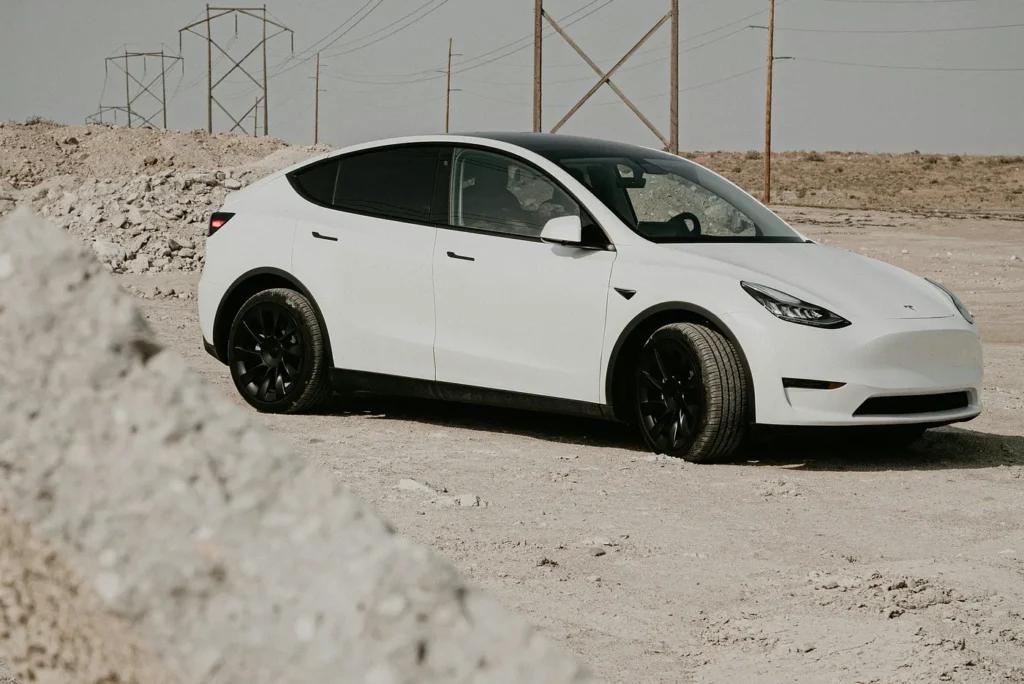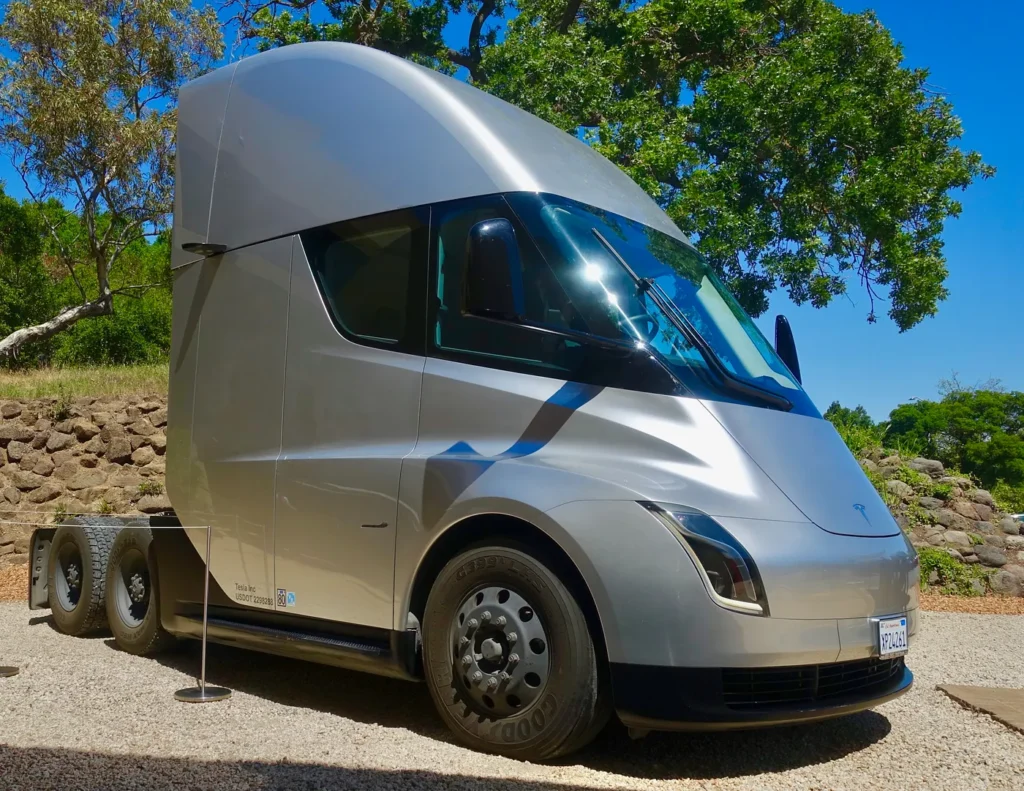Tesla Fanboys Won’t Wake Up, We Might as Well Eat
BY TQ BONNER

I know a lot of smart investors — people I consider extremely savvy in this game — and yet, I can’t for the life of me understand why so many of them think Tesla is a good investment. I get it. A lot of early investors made millions off Tesla. Life-changing money. When a stock takes you from struggling to set for life, it’s easy to get sentimental. Nostalgia kicks in, and suddenly, Tesla isn’t just another company — it’s a symbol of your success. I understand that.
But here’s the thing: you should never fall in love with a stock. Tesla is not the golden ticket it once was. The promise that fueled its meteoric rise? It’s fading. Reality is setting in, and blind loyalty won’t change that.
Even I played the game before the last election — bought a deep in-the-money call, sold calls against it for a few months, and made a decent return. I eventually sold the deep in-the-money option for a small gain. Before that, I was running credit spreads on Tesla, making money in either direction, because let’s be honest — no matter what the earnings report says, whether the stock goes up or down, the Elon Musk fanboys always push it back up. Just like they did after the last earnings report, even though the numbers clearly showed declining sales. The stock should not have done well, but here we are.
Even in this downturn, I fully expect the Musk cult to rally the stock back up — especially YouTube financial influencers, but that’s another story. Back to the facts.
Even if you don’t believe that Elon Musk is flirting with extremist rhetoric (and let’s face it, half the world probably does, depending on their political leanings), even if you truly believe Tesla’s autonomous driving and robotaxi dreams will come to fruition, you’d have to ignore the reality that Google and other companies are already ahead — and will likely give their tech away just to maintain dominance. You’d also have to pretend the Tesla Semi wasn’t just another empty promise. And then, of course, there’s the X-factor — Elon Musk himself.

Despite years of broken promises, missed deadlines, and outright deceptions from CEO Elon Musk, Tesla remains one of the most overvalued stocks in history. With a valuation-defying logic, Musk’s reputation as a visionary entrepreneur is built on grandiose claims that rarely materialize. Consider his endless promises:
Full Self-Driving (FSD): Musk has been selling the idea of a fully autonomous Tesla since 2016. Eight years and billions in customer prepayments later, FSD remains incomplete, riddled with safety concerns, and far from regulatory approval. This has not stopped Musk from continuously marketing it as “just around the corner.”
Robotaxi Fantasy: A fleet of autonomous Tesla robotaxis was supposed to make car ownership obsolete. Where are they? Nowhere. Instead, we see price cuts, slowing demand, and more reliance on gimmicks than innovation.
Cybertruck Disaster: Announced in 2019, Cybertruck’s production delays, design flaws, and excessive weight make it a logistical nightmare. It’s not a mass-market game-changer — an overhyped experiment with little real-world value.
The Solar Roof Mirage: Promised in 2016 as an energy revolution, Tesla’s solar roofs have barely materialized. Customers report delays, cost overruns, and lackluster performance.

I’m not one of those hardcore Tesla bears who would short the stock outright — except maybe with a call credit spread, which, by the way, I’ve been running for the last three weeks, and they’ve all expired profitably because the negative sentiment is finally creeping in. But of course, I’ll probably lose on one of these when Musk pops up with another overhyped promise or a conveniently “leaked” video of an autonomous Tesla or the president of the United States decides to do another infomercial on the White House lawn, then the stock will shoot up again, and I’ll flip to put- spreads.
They’re propped up by one thing: government handouts.
Take those away, and the magic disappears.
In 2023 alone, Tesla pocketed billions selling regulatory credits to automakers that actually build vehicles people want to buy. Think about that. While Ford, GM, and Toyota sweat over factories, supply chains, and design studios, Tesla’s secret sauce is… playing middleman in a carbon credit racket. Strip those credits away, and suddenly, Tesla’s “industry-leading margins” look as flimsy as a Cybertruck’s body panels.
But wait — it gets worse. Tesla’s core business is crumbling. Price cuts have turned its once-lucrative models into loss leaders. Demand is softening. Competitors are closing in. And yet, the company still leans on the crutch of public money — your money — to keep the lights on.
Let’s call this what it is: corporate welfare.
When you hear “Tesla received billions in government subsidies,” picture this: A trillion-dollar company, helmed by the world’s richest man, getting free cash from taxpayers — the same way a struggling family gets food stamps. Only in this case, the subsidies aren’t a safety net. They’re a trampoline, bouncing Tesla’s stock price into the stratosphere while its fundamentals sink.
Take the latest reports out of Canada, where Tesla was caught inflating sales figures by millions of dollars in just one quarter. They allegedly stuffed sales into earlier reporting periods to make the numbers look better than they were — classic accounting tricks companies use when the truth doesn’t look so good. And yet, none of this is shocking. Anyone watching Tesla closely knows they’ve been playing fast and loose with reality for years.
The truth is messy, and no one wants to hear it. Tesla’s success story isn’t about engineering genius. It’s about gaming a system rigged to reward checkbook environmentalism over actual progress. This cycle has been my strategy with Tesla for a long time. But I really want to hear from the community — can anyone give me a legitimate reason why they see this as a strong long-term investment?
Of course, if another CEO stepped in and Musk was out of the picture, that would be a different story. But let’s talk about the so-called Tesla robots. What actual working prototypes do they have? Is anything they’ve developed actually more advanced than what Boston Dynamics is doing?

The Tesla Optimus robot is the latest grand promise, but how much of it is reality versus science fiction? We’ve seen a couple of highly staged videos, a few slow-moving demos, but nothing that suggests Tesla is genuinely ahead in the robotics race. Meanwhile, Boston Dynamics has years of research, real-world deployments, and military contracts. Tesla, on the other hand, has an AI-generated hype machine.
Then there’s the issue of Tesla’s core business — EVs. The competition is heating up. Companies like BYD are taking over the global market, and legacy automakers are finally catching up. Tesla no longer has a monopoly on electric vehicles, and its market share is shrinking. The price cuts and discounts clearly indicate that demand isn’t as strong as it used to be. And yet, investors continue to treat Tesla like it’s in a league of its own. Why?
We’ve also got regulatory risks.
Now, let’s not forget the elephant in the room — full self-driving (FSD). This is Musk’s holy grail, the thing that keeps Tesla believers convinced that the company will 10x again. But we’ve heard about robotaxis and full autonomy for nearly a decade. Where is it? The best Tesla has managed is a Level 2 driver-assist system that still requires human supervision. Meanwhile, Waymo and Cruise already have fully autonomous vehicles on the road, operating without human intervention.
If FSD is truly the future, Tesla is not the leader in that space. They might have the best marketing, but they don’t have the best tech. And if the government ever clamps down on Tesla for overpromising its self-driving capabilities, that could lead to lawsuits, fines, and regulatory setbacks that no investor wants to deal with.
And let’s not even get started on Musk’s erratic leadership. He’s driven away top talent, alienated investors, and picked fights with regulators. Tesla may have been an innovative company in its early days, but at this point, it’s running on hype and brand loyalty rather than actual industry dominance.
This isn’t investment advice — this is just what I’ve done. You need to research options strategies like put credit spreads and call credit spreads. These two are pretty straightforward, and I’ve used them regularly. Of course, I’ve dabbled in other strategies too, to take advantage of Tesla’s volatility. But here’s the thing — you will have to take losses at some point. Trading means losing money sometimes.
Take what happened when Trump had his little love fest on the White House lawn. Tesla stock did a complete U-turn and shot up. My positions? They were betting against the stock going up. So, right now, they’re down. I’m probably going to lose on them. But as the momentum shifts, I’ll likely switch gears and start betting on Tesla staying above a certain level — at least until Elon Musk inevitably does something to remind the world of his Nazism.
And let’s not forget Tesla’s earnings call. It’s going to be terrible. But that doesn’t mean the stock will tank. Musk will hop on the conference call, spin a wild sci-fi fantasy about building a spaceship capable of warp speed, maybe even one that can leave the galaxy. And, like clockwork, people will believe it.
So, once again, what is the long-term bull case for Tesla? If you’re playing the stock short-term, sure, I get it. There are ways to make money: the volatility, the hype cycles, the Musk effect. But if you’re holding Tesla for the next 10 years, what exactly are you betting on? Is Musk right about everything, and all of his wildest predictions will come true? Will regulators, competitors, and political headwinds eventually catch up with the company?
I’m open to hearing the other side. But so far, I don’t see it.